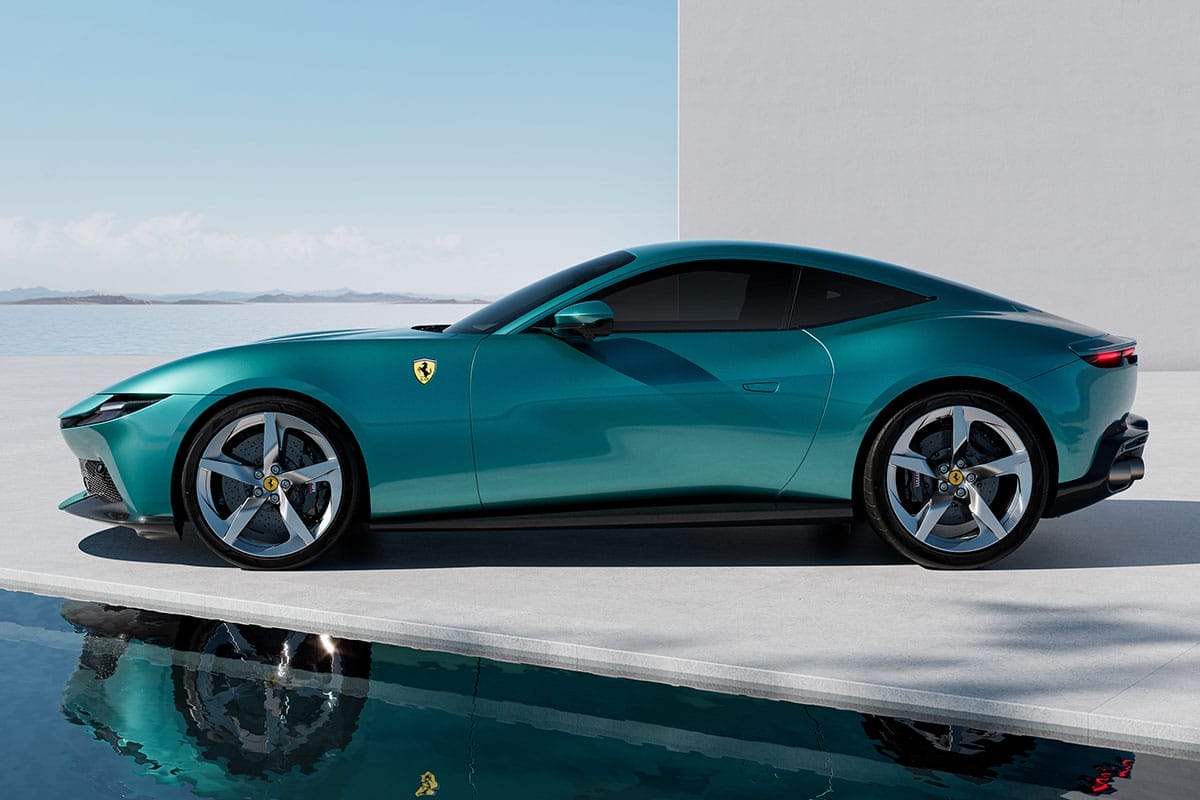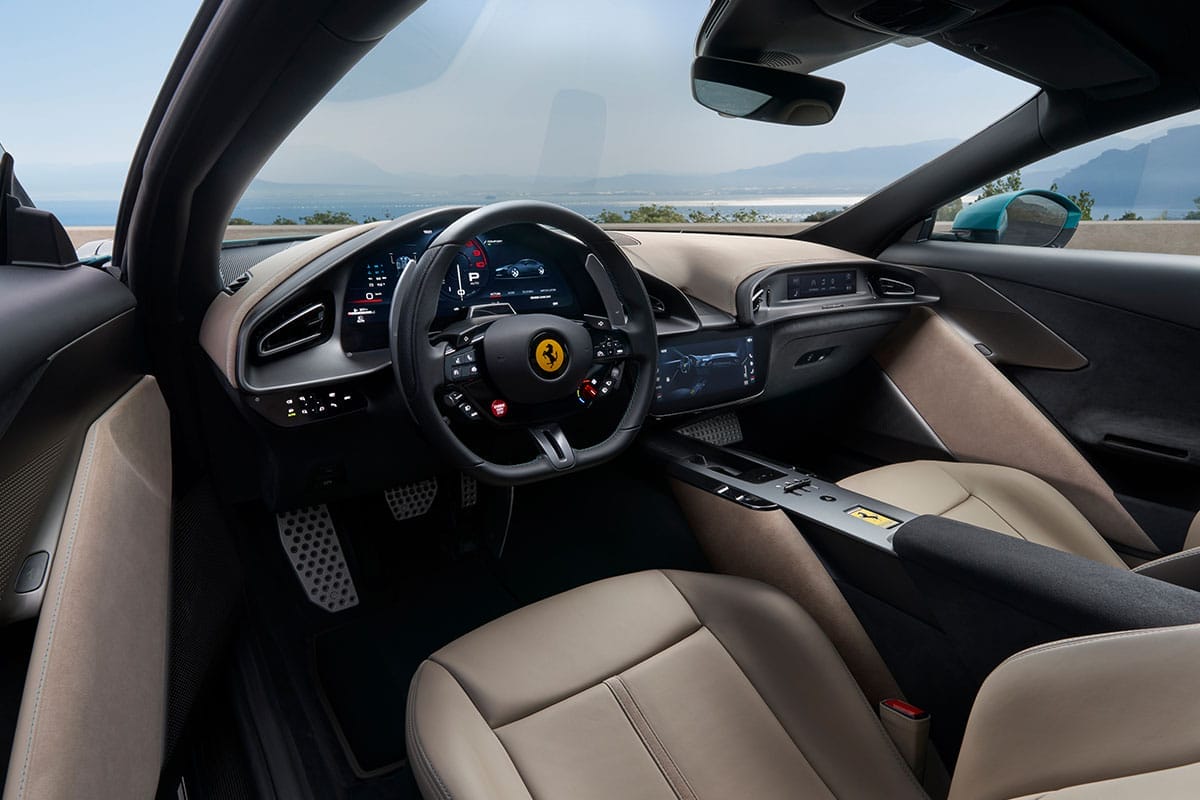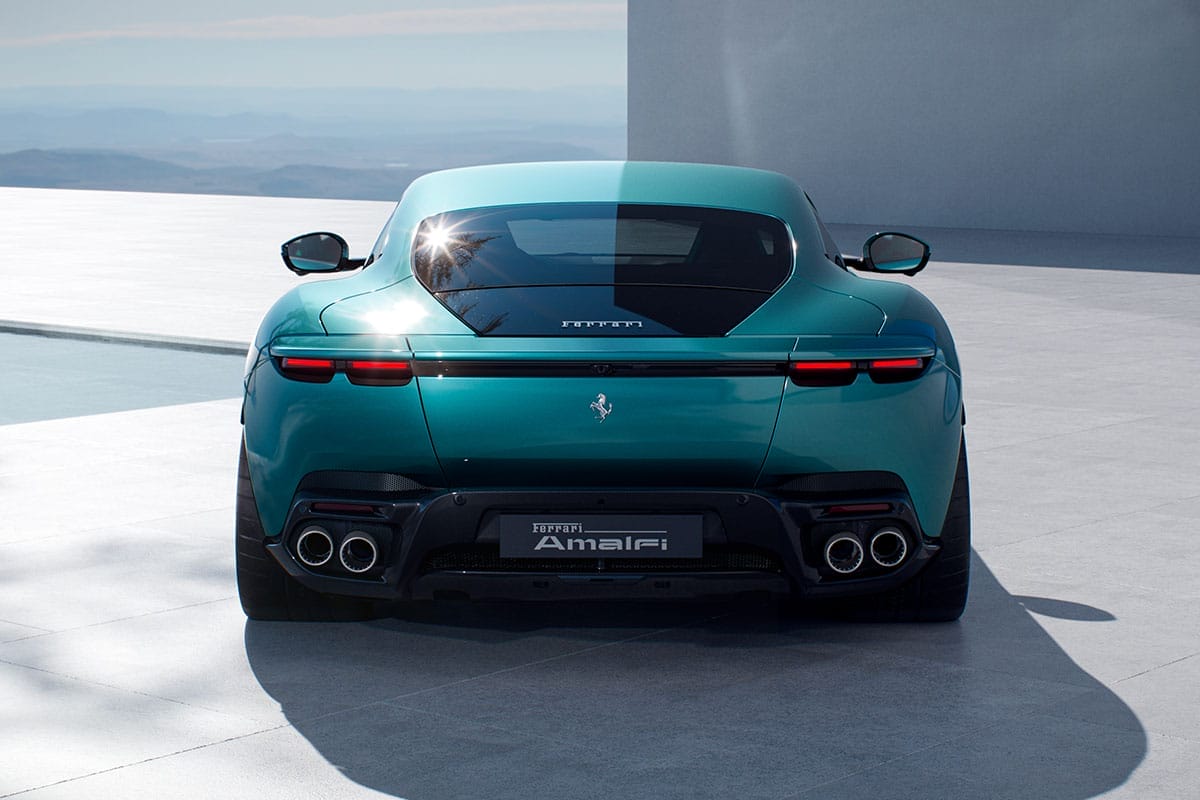On paper, there’s no second act for Ferrari’s unexpected 2+2 grand tourer, the Roma. Introduced in 2020 as something of a Porsche 911 Turbo and/or Aston Martin Vantage competitor, the Roma lasted but five years. Critically, it was a smash, with this publication asserting, “Marques from Supercar Valley, southern Germany, and the U.K. are always jockeying for position as purveyors of the latest and the greatest but, for now, it’s this driver’s opinion that the new Ferrari Roma is the best V-8-powered GT car on the road, anywhere.”
That said, the Roma wasn’t without its detractors; the car’s polarising perforated front grille drew as much criticism as it did praise. One aspect of the Roma that the car world agreed on was that the haptic controls—especially the digital start button—all sucked.

Meet the Amalfi, the successor to the Roma. Why Amalfi? According to Ferrari, the Roma was all about la dolce vita, “the sweet life” as exemplified by the Italian capital in the 1950s and ‘60s. (Yes, like the Fellini film of the same name.) In fact, the Roma was marketed as la nuova dolce vita, as in the new sweet life, and you can think of the Amalfi as la nuova nuova dolce vita. The main thrust of the Amalfi is that everything unloved about the Roma has been addressed, along with the usual betterments that denote—despite Ferrari’s best marketing efforts—what amounts to a standard mid-cycle refresh.

Starting with the sheet metal, gone is the controversial grille. In its place is a metal-mesh lower grating and the automaker’s now-standard black mask spanning the headlights. Here, though, instead of a thick stripe, as found on Ferrari’s 12Cilindri or upcoming F80, the Amalfi features a thin “bar,” as chief design officer Flavio Manzoni calls it, a bar with smaller headlights hung on either end. The bar theme is duplicated at the rear of the Amalfi, this time with Ferrari’s four signature taillamps flanking it. Manzoni claims that every body panel is different when compared to the Roma, though, if you look, you’ll notice some are more different than others.

Inside the cabin, all of the haptic buttons on the steering wheel—including the all-important start button—have been replaced by real, tactile, honest-to-goodness physical buttons. Score one for the luddites. Though the overly fussy haptic mirror controls remain. Pity. As to why there were haptic controls in the first place, a Ferrari spokesperson stated that it was just to be as cutting edge as possible, but the team obviously failed to account for the fact that touch controls just don’t work well while driving. With the Amalfi, consider the problem (mostly) solved.
As for the rest of the interior, there’s a new centrepiece made from milled-and-anodised aluminium, the primary purpose of which, beyond aesthetics, is to make the cockpit feel roomier. Also, the centre screen has been reoriented from portrait to landscape view and is much better integrated.

As for the rest of the refresh-plus, the 3.9-litre twin-turbo V-8 now makes 631 hp, up from 611 hp. The torque remains the same at 561 ft-lbs. Improved breathing, faster spinning turbos, new cams, the ECU from the Ferrari 296, and a reworked crankshaft are said to result in a quicker-revving engine, one that gets the Amalfi from zero to 62 mph in 3.3 seconds and 124 mph in 9.0 seconds.
The eight-speed dual-clutch transaxle remains, though third and further gears are “improved.” Speaking of improvements, the Amalfi gets several aerodynamic enhancements, from functional headlight ducts that not only reduce drag but also cool the engine to an active, three-position rear spoiler that, when fully deployed, creates 242 pounds of downforce at 155 mph. Not bad for a GT car, eh? Additionally, a new brake-by-wire system is said to improve stopping prowess by nearly 10 per cent.

As hesitant as Ferrari is to call the Amalfi a grand tourer, like the Roma before it, that particular shoe fits like a Ferragamo. For example, it’s not a 2+2 to take the kids anywhere, though in an emergency, we suppose you could. No, the rear seats are there for extra luggage. As it should be.
Looking at the Amalfi, it becomes pretty obvious that the sharp new looks will attract even more first-time buyers to the brand, and the righting of the interior wrongs will satisfy, if not pacify, long-term Ferraristis. All in all, the Amalfi, which goes on sale next year with an estimated starting price of US$275,000, feels like a worthy successor to an unsung hero. Seems like Ferrari’s really got this whole sports car thing figured out.
This story was previously published on Robb Report USA.




